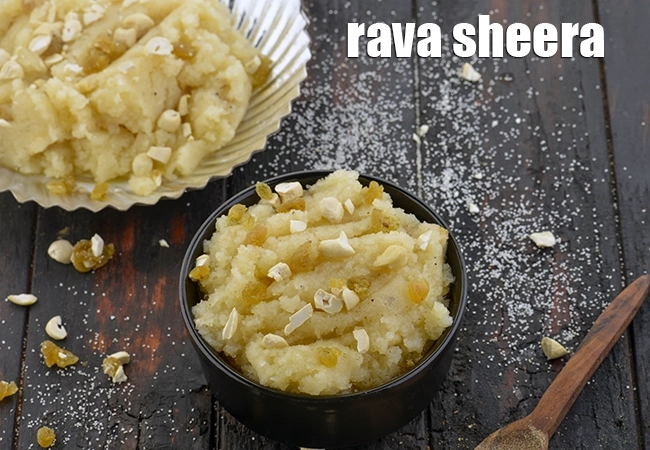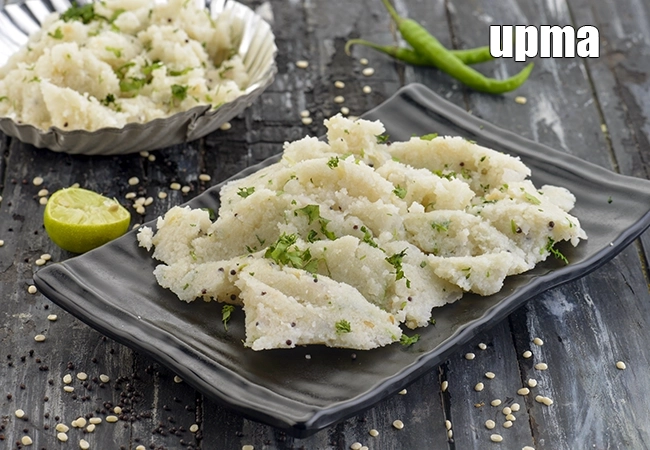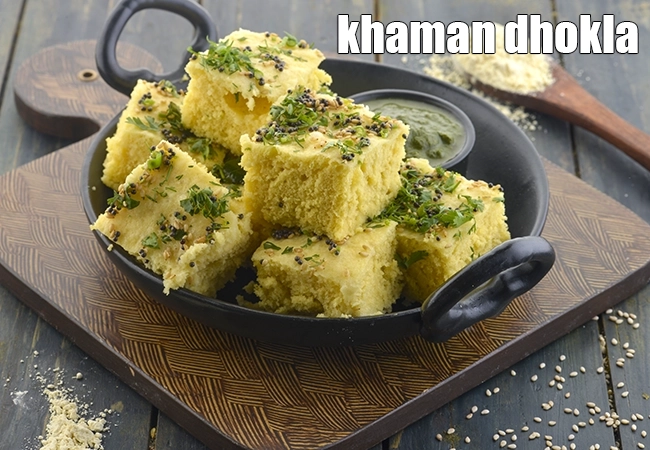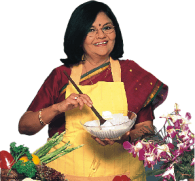semolina

Table of Content
What is Semolina (Rava, Sooji)?
In the Indian culinary context, rava and sooji are synonymous terms referring to semolina, a coarse flour primarily made from durum wheat. While "rava" is more commonly used in South India and "sooji" in North India, they denote the same versatile grain product. Unlike finely ground wheat flour (atta) or highly refined all-purpose flour (maida), rava/sooji is characterized by its granular texture, ranging from very fine to coarse. This texture is a direct result of the milling process, where the endosperm of the wheat kernel is ground into fragments rather than pulverized into a fine powder, then sifted to separate it from the bran and germ.
The distinct texture of rava/sooji makes it exceptionally adaptable for a wide array of Indian dishes, encompassing both savory and sweet preparations. In South India, it's a staple for popular breakfast items like Upma, a savory porridge, and is crucial for making crispy Rava Dosa and soft Rava Idli. Its ability to absorb liquids while maintaining a distinct bite is highly prized in these preparations. Meanwhile, in North India, sooji is famously used to create the rich, pudding-like dessert Sooji Halwa, often garnished with nuts and ghee, and also finds its way into batters for crispy Pooris and fluffy Bhaturas.
Beyond these iconic dishes, rava/sooji's versatility extends to various regional snacks and meals. It is frequently used as a coating for shallow-fried items like fish cutlets or vegetable patties, lending a delightful crispness to the exterior. Some variations of traditional bread like Mathri also incorporate sooji for a crumbly texture. Its quick-cooking nature and ability to be dry-roasted before use make it a convenient ingredient for fast and wholesome meals, particularly for breakfast or tea-time snacks.
The market in India offers various types of rava/sooji, catering to specific culinary needs. The most common is Bombay rava, which is typically made from durum wheat and can vary in fineness. Another notable type is Bansi rava, often coarser and darker, sometimes derived from a specific variety of Indian durum wheat, favored for certain upma preparations. There's also Idli rava, specifically coarse and rice-based, used primarily for making idlis, though wheat-based rava is also used for "Rava Idli." The choice of rava's coarseness directly influences the texture of the final dish, allowing for a range of culinary outcomes from soft puddings to crispy crepes.
From a nutritional standpoint, rava/sooji offers several benefits. As a product of wheat, it provides carbohydrates for energy. While refined sooji may have some of its fiber removed, varieties like "whole wheat rava" or coarser forms retain more of the bran and germ, thus offering better dietary fiber content. It also contains some protein, B vitamins (like thiamin and folate), and minerals such as iron and magnesium. These nutrients contribute to overall well-being, supporting energy metabolism, blood health, and proper nerve function.
In essence, rava and sooji are more than just coarse wheat grits in India; they are foundational ingredients reflecting the ingenuity and diversity of Indian cooking. Their adaptability to various textures and flavors, coupled with their nutritional value and year-round availability, ensures their continued prominence in Indian kitchens, from everyday meals to festive treats.
Also Known as
Rawa, sooji, rava
How to Select Semolina, Sooji
• Semolina is milled to various degrees of coarseness, and fine, medium and large grained varieties are readily available in grocery stores.
• Check to see whether the semolina you are buying is made from soft wheat or hard wheat (the durum variety) – the former will be good for upma, idli, sweets, etc., while the latter is what you need for gnocchi, pasta and home-made couscous.
14 Uses of Semolina (rava, sooji)
Semolina, also known as Rava or sooji, is a coarse flour that is made from Durum wheat and can vary in color from yellow to white depending on the quality of the wheat. Semolina is mainly used for making pasta, different kinds of cereals or desserts in USA and other countries but in India it is used mostly to make savoury dishes.
1. Semolina is used to make both savory and sweet dishes.
rava sheera recipe | suji ka halwa | sooji halwa | with 13 amazing images.

The most basic and most known Indian dishes with rava are Upma and Rava Idli. These snacks too can be further modified into different dishes by addition of various other elements like tomato puree or a tadka.
upma recipe | rava upma | sooji upma | quick upma recipe | breakfast upma

2. Semolina is extensively used in the South Indian cuisine. In the south, rava is used to make the famous Rava dosa, different types of idlis and Rava appe and a traditional vada like snack that is pan fried in a special pan. The beauty of all these items is that they can be eaten at any time of the day.
3. Rava Chilla, is a savory pancake where the semolina is mixed with spices and finely chopped vegetables and cooked on a hot tava.
For complete uses of Semolina (rava, sooji) read this article.
khaman dhokla | Gujarati khaman dhokla | steamed, soft khaman dhokla

How to Store Semolina, Sooji, Rava
• Store in a cool, dry cupboard, preferably in an airtight container.
• Flour is always readily available so it should only be brought in quantities that will last a maximum of two to three months.
• If it is necessary to store flour for extended periods of time, keep it in the freezer.
• It is better not to mix new flour with old if you are not using the flour regularly.
• Make sure the containers are airtight to prevent infestation by the flour moth or beetle.
Health Benefits of Sooji, Semolina
• Semolina is high in protein, very high in complex carbohydrates and fairly high in potassium, phosphorus, magnesium, calcium and fibre, with some iron, zinc, manganese and copper.
• Being a low-fat, high carbohydrate food, it offers a lot of energy for active and energetic people.
• It is low in cholesterol and sodium and fairly high in fibre, and can be safely incorporated into a well-balanced diet.
• Notably, it contains potassium, which supports good kidney and heart function and the smooth functioning of other muscles; phosphorus, required by the body to metabolize energy; magnesium for healthy muscles, bones and nerves; calcium for strong bones; and zinc to boost the immune system.
• It is high in vitamin E and contains a fair amount of B-complex vitamins (especially folic acid).
• Because semolina is made from durum wheat and not the softer wheat that goes into bread, it is digested more slowly and has a low glycemic index, which is good news for people wishing to control or reduce their weight and blood sugar, and especially for diabetics.
Nutritional Fact of Semolina
1 cup of semolina which is approx. 140 gm comprises of
487 calories
14.5 g of protein
105 gm of carbohydrates
1.1 gm of fat
0.28 gm of fibre
0.17 mg of vitamin B1 = 14.1% of RDA (about 1.2 to 1.5 mg)
0.04 mg of vitamin B2 = 2.35% of RDA (about 1.1 to 1.7 mg for women)
2.24 mg of vitamin B3 = 18.6% of RDA (about 12 mg)
116 mg of Potassium (K) = 2.46% of RDA (about 4,700 mg)
18.8 mg of Magnesium (Mg) = 5.37% of RDA (about 350 mg)
2.24 mg of iron = 10.6% of RDA (about 21 mg for women)
142.8 mg of Phosphorus = 23.8% of RDA (about 600 mg)
1.5 mg of zinc = 12.5% of RDA (about 10 to 12 mg)

Related Glossary
Follow US
Recipe Categories
- Vitamin B12 Cobalamin Rich Recipes 33 recipes
- Low Calorie, Weight Loss Indian Recipes 421 recipes
- Low Cholesterol Indian Recipes 308 recipes
- Healthy Indian Breakfast 373 recipes
- Indian Diabetic recipes 559 recipes
- Indian Pregnancy recipes 461 recipes
- Zero Oil Indian Recipes 133 recipes
- Iron Rich Indian recipes 268 recipes
- Healthy Indian Acidity recipes 137 recipes
- Healthy Sabzis 108 recipes
- Indian Healthy Veg Snack 276 recipes
- Healthy Heart Recipes 415 recipes
- Healthy Veg Indian Soups 74 recipes
- Calcium Rich Indian 373 recipes
- High Blood Pressure Indian Recipes 103 recipes
- Healthy Indian Salads Recipes 137 recipes
- Low Carb Indian Diet, recipes 163 recipes
- Hypothyroidism Diet 63 recipes
- Arthritis Diet 68 recipes
- High Protein Indian recipes 95 recipes
- Vitamin K Diet 42 recipes
- Fatty Liver Diet 39 recipes
- PCOS 136 recipes
- Gluten Free Veg Indian 196 recipes
- High Fiber 328 recipes
- Indian Cancer Patients 275 recipes
- Jaundice Diet 45 recipes
- Sprouts 61 recipes
- Typhoid 43 recipes
- Irritable Bowel Syndrome (IBS) 23 recipes
- Kidney Stone Diet 10 recipes
- Home Remedies 213 recipes
- Senior Citizen 195 recipes
- Healthy Indian Drinks and Juices 213 recipes
- Diet for Dialysis 10 recipes
- Gout Indian Recipes 17 recipes
- Potassium Rich 80 recipes
- Vegan 195 recipes
- Indian recipes to treat Vomiting 8 recipes
- Forever Young Diet, Anti Aging Indian Diet 255 recipes
- Antioxidant Rich Indian 445 recipes
- Vitamin B1 Rich Indian Foods, Recipes 101 recipes
- High in Omega 3 Fatty Acids 32 recipes
- Zinc Rich Foods 55 recipes
- Vitamin A Rich, Beta Carotene, Retinol 89 recipes
- Malaria Diet 19 recipes
- Magnesium Rich 94 recipes
- Healthy Indian Dinner 85 recipes
- Vitamin C Rich Indian recipes 118 recipes
- Low Veg Glycemic Index 86 recipes
- Lower Blood Pressure Salads 8 recipes
- Healthy Indian Lunch Recipes 29 recipes
- Lactation 25 recipes
- Vitamin E Rich 51 recipes
- Hyperthyroidism Diet 47 recipes
- Vitamin B3, Niacin Rich 41 recipes
- Post Surgery Diet 42 recipes
- Selenium 27 recipes
- Phosphorus Rich Indian Recipes, Foods 74 recipes
- Lower Blood Pressure Desserts Sweets 14 recipes
- Copper 15 recipes
- Foods Rich in Vitamin B2 Riboflavin 22 recipes
- Vitamin B6 Diet 36 recipes
- B Vitamins 231 recipes
- Vitamin B9 Rich Folate 50 recipes
- Marathoners, Endurance Athletes, Triathlete 225 recipes
- Manganese Diet 32 recipes
- Thalassemia 18 recipes
- Detox Water, Fruit Infused Water 42 recipes
- Lactose Free Dairy Free 22 recipes
- Omega 6 Fatty Acids 32 recipes
- Phytonutrients 51 recipes
- Chronic Kidney Disease Indian recipes 12 recipes
- Selenium1 0 recipes
- Quick Snacks / Quick Starters 385 recipes
- Quick Breakfast Indian 131 recipes
- Quick Sabzis 117 recipes
- Quick Rotis / Parathas 46 recipes
- Quick Indian Sweets 139 recipes
- Quick Stir-Fries 51 recipes
- Quick Vegetarian Indian Soups 72 recipes
- Quick Chutneys 67 recipes
- Quick Vegetarian Rice, khichdi Recipes 56 recipes
- Indian Snacks Under 10 Minutes (Quick Veg Recipes) 44 recipes
- Quick Indian Dips, Gravies & Sauces 105 recipes
- Quick Veg Indian Pizza 17 recipes
- Quick Veg Pasta 25 recipes
- Quick Pickles / Aachar 25 recipes
- Quick Dals / quick Kadhis 29 recipes
- Snacks under 5 minutes 33 recipes
- Quick Healthy Recipes 43 recipes
- Quick Pressure Cooker 46 recipes
- Quick Desserts 47 recipes
- Quick 3 Ingredients 63 recipes
- Quick Indian Desserts 20 recipes
- Quick 4 Ingredients 41 recipes
- Quick 5 Ingredients 42 recipes
- Kids Tiffin Box 319 recipes
- Recipes for Toddlers (1-3 Years) 32 recipes
- Sweet Recipes for Kids 456 recipes
- Recipes for Baby (10 to 12 Months) 17 recipes
- Quick Indian recipes for Kids 72 recipes
- Indian Breakfast Recipes for Kids 192 recipes
- Recipes for Weaning (8 to 9 months) 22 recipes
- Healthy Foods for Kids 196 recipes
- Snack Recipes for Kids 619 recipes
- Recipes Kids can make 36 recipes
- Kids After School 794 recipes
- Kids Jar Snacks 66 recipes
- Finger Foods for Babies, Toddlers and Kids 76 recipes
- Kids Weight Gain 43 recipes
- Kids Wraps and Rolls 23 recipes
- Kids Veg Pasta 27 recipes
- Kids Brain Boosting 68 recipes
- Protein rich food for kids 71 recipes
- Recipes for Weaning 15 recipes
- Kids Pizzas 30 recipes
- Babies, Toddler and Kids Iron Rich Foods 31 recipes
- High Fiber Foods for Kids 39 recipes
- Kids High Energy Indian Foods 103 recipes
- Kids Noodles 37 recipes
- Kids Calcium Rich Indian recipes 92 recipes
- Babies recipes, 6 to 18 months 34 recipes
- Kids Recipes for Increasing Immunity 10 recipes
- Kids Weight Loss 58 recipes
- Teething Recipes for Babies 10 recipes
- Cereals and Pulses for 8 to 9 months Baby 8 recipes
- Weaning foods at 7 months 12 recipes
- Indian Teen 315 recipes
- Starters / Snacks 2138 recipes
- Indian Breakfast Recipes 819 recipes
- Main Course Recipes 925 recipes
- Indian Salads 385 recipes
- Indian Desserts , Sweets 985 recipes
- Indian Soups 249 recipes
- Indian Beverages, Indian Drinks 483 recipes
- Indian Dinner 903 recipes
- Indian Dinner1 0 recipes
- Indian Lunch 829 recipes
- Side Dishes 449 recipes
- Indian Travel Food 433 recipes
- Indian Barbeque1 recipes 22 recipes
- Frozen Foods, Indian Freezer Recipes 67 recipes
- Whole Wheat Recipes 56 recipes
- Indian Comfort Foods 212 recipes
- Dinner Menus 56 recipes
- Easy Indian Veg 70 recipes
- Innovative Indian Recipes 27 recipes
- No Cook Indian 37 recipes
- Advanced Recipes 10 recipes
- Cakes with Eggs 13 recipes
- Microwave 229 recipes
- Oven 619 recipes
- Indian Steamer Recipes 102 recipes
- Kadai Veg 407 recipes
- Indian Barbeque Recipes 43 recipes
- Sizzler tray 15 recipes
- Mixer 566 recipes
- Pressure Cooker 315 recipes
- Tava 647 recipes
- Non-stick Pan 1393 recipes
- Indian Freezer recipes, meals 57 recipes
- Appe Mould 18 recipes
- Pan 223 recipes
- Non Stick Kadai Veg 203 recipes
- kadai Indian 150 recipes
- Refrigerator 176 recipes
- Waffle Indian recipes 6 recipes
- Handi 12 recipes
- Juicer and Hopper 65 recipes
- Grill 31 recipes
- Toaster 21 recipes
- Gas Toaster 8 recipes
- Steam 72 recipes
- No Cooking Veg Indian 335 recipes
- Vegetarian baked Indian recipes 380 recipes
- Boiled Indian recipes 129 recipes
- Deep Fry 260 recipes
- Indian Tawa 265 recipes
- Shallow Fry Indian 25 recipes
- Microwave1 172 recipes
- Saute 273 recipes
- Indian Pressure Cooker 171 recipes
- Stir-fry 101 recipes
- Roasting 0 recipes

















